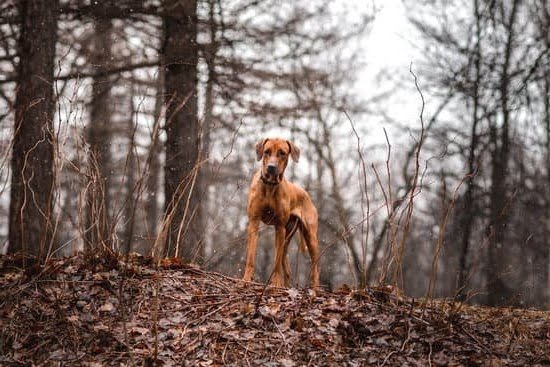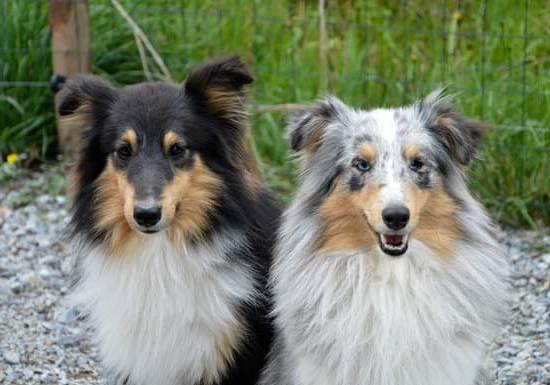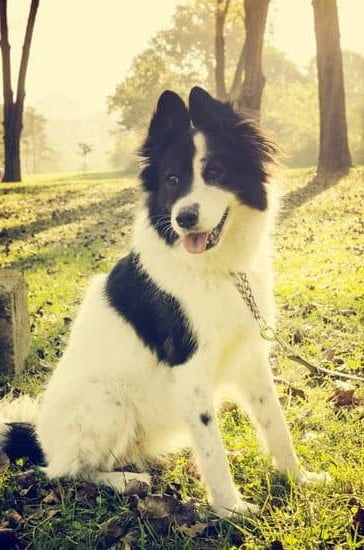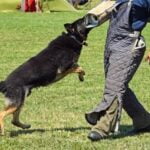Can I use pigeons to train bird dogs? The process of training a bird dog is essential for successful hunting. Understanding the natural instincts of these dogs, as well as the best training methods, is crucial.
One unique tool that can be used in bird dog training is live pigeons. This article will explore the benefits and challenges of using pigeons as training tools for bird dogs, different training methods, considerations for introducing live pigeons to bird dogs, and the importance of supervision and safety measures. Additionally, it will discuss alternatives to using pigeons for bird dog training and share real-life success stories.
Bird dogs play a critical role in hunting by assisting hunters in locating and retrieving game birds. Their natural instincts make them valuable assets in the field, but proper training is necessary to hone those instincts. This article will delve into the innate abilities of bird dogs and how they can be trained to perform their tasks effectively.
Using live pigeons as a training aid for bird dogs has both advantages and challenges that need to be considered. By exploring these factors, this article aims to provide insights on whether or not utilizing live pigeons is suitable for your specific situation in training bird dogs. It will also present varying training methods that utilize pigeons as part of the process, giving readers a comprehensive understanding of their options when it comes to this approach.
The Natural Instincts of Bird Dogs and How They Can Be Trained
Bird dogs are a crucial part of any successful hunting trip, as they have the natural instincts to locate and retrieve game birds. These instincts include their keen sense of smell, their ability to track and point at birds, as well as their desire to retrieve downed birds. However, these innate abilities must be honed and trained in order for them to reach their full potential.
Understanding the Natural Instincts of Bird Dogs
One of the key steps in training bird dogs is understanding their natural instincts. Different breeds of bird dogs have different hunting styles, and it’s important for trainers to recognize and capitalize on these differences. For example, pointers are known for freezing and “pointing” when they detect the scent of a bird, while retrievers excel at retrieving downed birds from water or dense cover.
Training Methods for Bird Dogs
There are various training methods that can be used to harness the natural instincts of bird dogs. Positive reinforcement techniques such as clicker training can be effective in teaching dogs to respond to commands and signals from their owners. Additionally, incorporating live birds into training sessions can help reinforce a dog’s natural hunting instincts.
The Role of Pigeons in Training Bird Dogs
Pigeons can be valuable tools in training bird dogs due to their similarities with game birds such as quail or pheasants. They are readily available, affordable, and easy to transport, making them convenient for training purposes. Using pigeons allows trainers to effectively simulate real hunting scenarios for bird dogs, helping them refine their skills before heading out into the field.
Understanding how bird dogs’ natural instincts work is crucial when it comes to effective training methods using tools like pigeons. By acknowledging these natural behaviors and employing appropriate techniques, trainers can help bring out the best in their bird dogs.
The Benefits and Challenges of Using Pigeons as Training Tools for Bird Dogs
Bird dogs play a crucial role in hunting by locating and retrieving game birds for their owners. These dogs are often trained to work with hunters, displaying an impressive set of natural instincts that make them proficient at their job. However, proper training is essential to ensure that bird dogs perform effectively in the field. One common method used to train these dogs is by utilizing live pigeons, which provides both benefits and challenges for the training process.
Using pigeons as training tools for bird dogs has several benefits. Pigeons have a strong ability to fly, making them an ideal choice for simulating hunting scenarios during training sessions. Additionally, live pigeons can help bird dogs develop their natural instincts such as pointing, flushing, and retrieving. This type of training allows the dog to practice discerning between various bird species and honing their skills in the presence of live game.
However, there are also challenges associated with using pigeons for bird dog training. These challenges include potential injury risks to both the pigeons and the dogs during training exercises. Careful supervision is required to ensure that the live pigeons are not harmed, while also providing a safe environment for the bird dog to learn and practice its hunting skills. Furthermore, introducting live prey may have unwanted consequences if not properly handled and could affect other wildlife populations in certain environments.
| Benefits | Challenges |
|---|---|
| Pigeons help simulate hunting scenarios | Risks of injury to both pigeons and birds |
| Promotes development of natural instincts in bird dogs | Supervision needed for safety during training exercises |
| Aids in distinguishing between various bird species | Unwanted consequences on wildlife populations if not handled properly |
Different Training Methods Using Pigeons for Bird Dogs
Point-to-Point Training
One popular method of using pigeons to train bird dogs is the point-to-point training technique. This involves releasing a pigeon and allowing the bird dog to naturally find and point at the pigeon. This helps in reinforcing the natural instincts of the bird dog, as well as improving their ability to locate and point at birds during hunting. By repeating this process multiple times, the bird dog becomes more adept at locating and pointing birds.
Drag Line Training
Another effective training method using pigeons for bird dogs is drag line training. In this technique, a clipped pigeon is attached to a drag line and slowly moved along the ground in front of the bird dog. As the pigeon moves, it naturally creates a scent trail, which triggers the bird dog’s instincts to track and eventually point at the pigeon. This method helps in honing the tracking abilities of the bird dog while also simulating real hunting scenarios.
Remote Launch Training
Remote launch training involves using remote-controlled launchers to release live pigeons into the air for the bird dog to identify, track, and point at. This method allows for controlled and consistent practice sessions where live pigeons can be launched from various distances and angles, simulating real-time hunting scenarios. Remote launch training can help in improving a bird dog’s responsiveness to different flight patterns and distances when pointing at birds during actual hunts.
These various training methods using pigeons can effectively sharpen a bird dog’s natural instincts and hunting skills, making them more proficient in assisting hunters during real-life hunting situations.
Considerations for Introducing Live Pigeons to Bird Dogs
Introducing live pigeons to bird dogs can be an effective training method, but it requires careful considerations to ensure the safety and success of the training process. Here are some important factors to keep in mind when using live pigeons for bird dog training:
- Health and condition of the pigeon: It is crucial to use healthy and disease-free pigeons for training. Sick or injured pigeons can negatively impact the training process and potentially harm the bird dog.
- Gradual introduction: When introducing live pigeons to bird dogs, take a gradual approach. Start with calm and well-behaved pigeons to help the bird dog become accustomed to their presence before moving on to more challenging scenarios.
- Safety measures: Always prioritize safety when using live pigeons for training. This includes ensuring that the pigeon’s wings are clipped to prevent them from flying away during the training session, as well as providing a secure environment for both the pigeon and the bird dog.
In addition to these considerations, it’s important to monitor the interaction between the bird dog and live pigeons closely. Understanding how the bird dog responds to the presence of live birds will help adjust the training methods accordingly.
Using live pigeons as part of bird dog training can be a valuable tool for honing hunting instincts and skills. However, it is essential to approach this method with caution and prioritize the safety and well-being of both the bird dog and live pigeons throughout the training process.
The Importance of Proper Supervision and Safety Measures When Using Live Pigeons for Training
When using live pigeons for training bird dogs, it is crucial to prioritize the safety of both the dogs and the birds. Proper supervision and safety measures are necessary to ensure a successful and ethical training experience. Here are some important considerations to keep in mind:
- Supervision: Always supervise the interaction between the bird dog and the live pigeons during training sessions. This helps prevent any harm that may come to either the bird dog or the pigeons.
- Safety measures: Implement safety measures such as using breakaway or quick-release straps on the pigeons to prevent injury or harm if caught by the bird dog. Additionally, avoid leaving a bird dog unattended with live pigeons as this can lead to unpredictable outcomes.
- Training environment: Create a safe and controlled environment for training with live pigeons, such as using a secure and enclosed area where the birds can fly but not escape, providing a more controlled setting for training exercises.
Incorporating these preventative measures will reduce potential risks associated with using live pigeons for bird dog training, ensuring a positive and safe learning experience for both the dogs and birds involved.
Furthermore, it’s also essential to seek guidance from experienced trainers who can provide valuable insights into effective supervision and safety strategies when using live pigeons for bird dog training. By following industry best practices, you can mitigate potential risks and create a conducive learning environment that promotes responsible training techniques.
Alternatives to Using Pigeons for Bird Dog Training
When it comes to training bird dogs, using live pigeons may not be feasible or practical for some individuals. Fortunately, there are alternative methods and tools that can still effectively train bird dogs. One popular alternative is using quail or chukar partridges.
These birds are smaller than pigeons and easier to handle, making them suitable for training young or inexperienced bird dogs. Quail and chukar partridges also have a natural scent that can help in teaching bird dogs to locate and retrieve game.
Another alternative to using live pigeons for bird dog training is utilizing wing-clipped pigeons. These pigeons have been selectively bred to prevent flight but retain their natural instincts, making them suitable for training without the risk of losing the birds during sessions. Additionally, wing-clipped pigeons provide a more controlled environment for training as they cannot fly away from the designated training area.
Electronic bird launchers are also popular alternatives for simulating bird flushes during bird dog training. These devices allow trainers to control when and where birds are released, providing a consistent and controlled experience that closely resembles real hunting situations. Electronic launchers come in various sizes and can accommodate different types of game birds, giving trainers flexibility in their training programs.
| Alternative Methods | Description |
|---|---|
| Quail or Chukar Partridges | Smaller birds with natural scent; suitable for young or inexperienced bird dogs. |
| Wing-Clipped Pigeons | Pigeons selectively bred to prevent flight; provide controlled environment for training. |
| Electronic Bird Launchers | Devices for simulating bird flushes; offer consistent and controlled experience. |
Real-Life Success Stories of Using Pigeons to Train Bird Dogs
In conclusion, while using pigeons to train bird dogs may present some challenges, many hunters and trainers have found success in utilizing live pigeons as training tools. The real-life success stories of using pigeons to train bird dogs provide evidence of the effectiveness of this method in honing the natural instincts of bird dogs. These stories serve as inspiration for novice trainers and hunters who are considering incorporating live pigeons into their training regimen.
Additionally, the real-life success stories highlight the benefits of using live pigeons to train bird dogs, including improved pointing and retrieving skills. The firsthand accounts from experienced trainers demonstrate how proper training methods can help bird dogs develop their natural hunting abilities. By sharing these success stories, the article aims to encourage individuals to explore different training techniques and consider using live pigeons as a valuable tool for bird dog training.
Ultimately, while there are alternatives to using live pigeons for bird dog training, the real-life success stories emphasize the unique advantages that this method offers. As with any type of training, it is essential to approach the use of live pigeons with caution and prioritize safety measures. By learning from the experiences of others who have achieved positive results through this approach, individuals can make informed decisions about introducing live pigeons into their bird dog training activities.
Frequently Asked Questions
How Do You Train a Bird Dog With a Pigeon?
Training a bird dog with a pigeon involves introducing the scent and sight of live pigeons to the dog in a controlled environment. This can be done by using live pigeons in training sessions to help the dog become familiar with the bird’s scent and learn how to locate and point them in the field.
Gradually increasing the difficulty of finding and pointing the pigeons will help train the bird dog effectively.
What Is the Best Bird for Dog Training?
The best bird for dog training largely depends on what type of hunting or field work the dog will be doing. However, common birds used for training include quail, chukar, pheasant, and pigeons. Each type of bird offers different challenges for the dog, such as size, speed, and scent, which can help prepare them for a variety of hunting scenarios.
What Kind of Pigeon Is Best for Dog Training?
When it comes to training bird dogs, homing or racing pigeons are often used due to their abundance and ease of acquisition. These types of pigeons are typically easier to find and work with compared to other breeds, making them ideal for training purposes.
Their strong fluttering flight pattern also makes them excellent for teaching dogs how to track and point birds in an open field setting.

Welcome to the blog! I am a professional dog trainer and have been working with dogs for many years. In this blog, I will be discussing various topics related to dog training, including tips, tricks, and advice. I hope you find this information helpful and informative. Thanks for reading!





